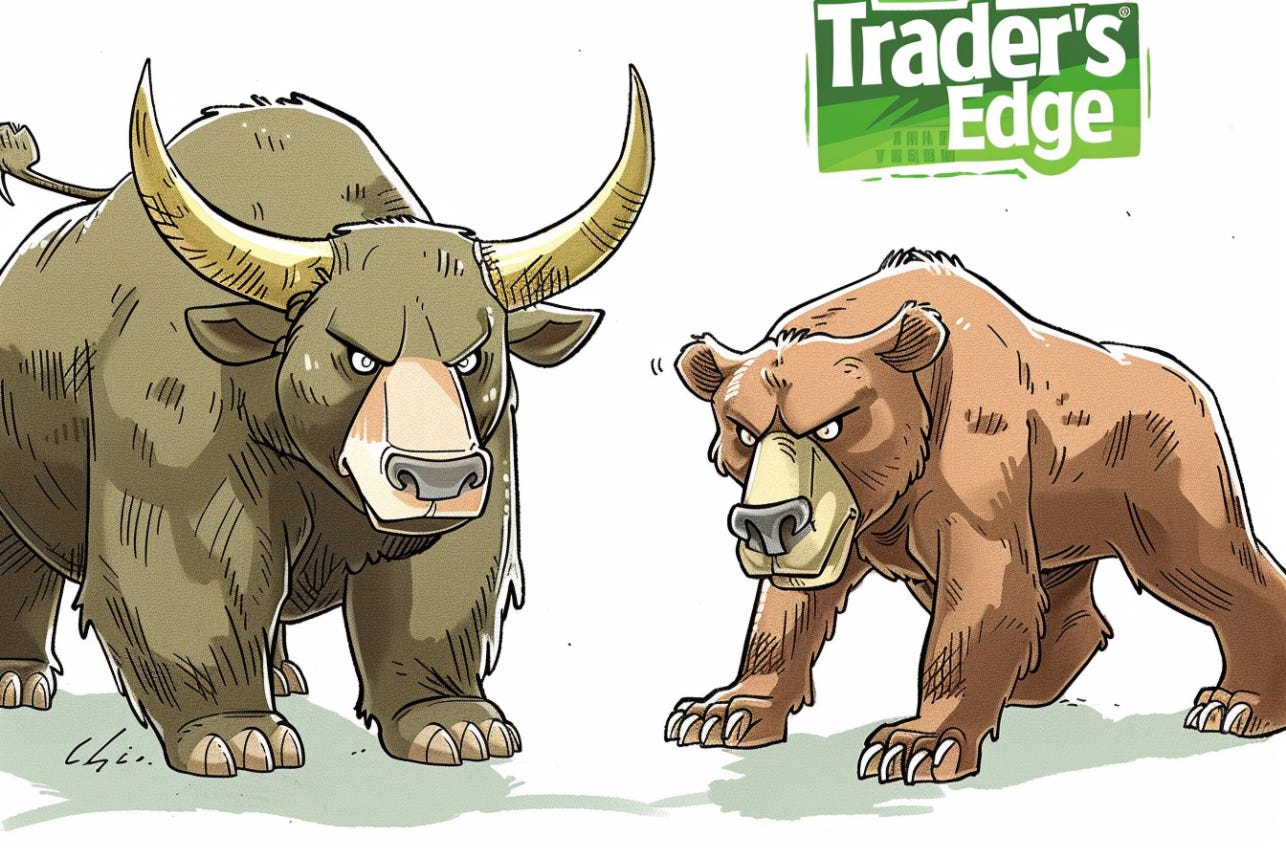Trader's Edge: Enhance Your Investment Strategy with Options Trading
Leverage the DynaLogic Zone signals with Relative Strength Indicators for Potential Short-Term Gains on Put and Call Options
What is Trader’s Edge?
Trader's Edge identifies high probability put and call options trades based on specific criteria, using the DynaLogic Zone technology coupled with Relative Strength readings.
Here's an example of a Trader's Edge signal:
Dell Computer (DELL)
On May 29, 2024, DELL closed at $179.21 with an RSI of 82.96 (Overbought). Following that close, Dell started trading lower.
On 6/4/24 DELL closed at $135.75 with an RSI of 46.44 and a DynaLogic Zone 1.
Our recommendation would have been to buy a put option to capture the continuing downtrend.
We bought out-of-the-money 8/16/24 with $100 strike price.
On 6/5/24 DELL closed at $137.66 and we added to the put position.
On 6/7/24 we closed out the trade up 36.1%
As with any option position proper risk tolerance needs to be an integral part of the transaction.
How to Use Trader's Edge Signals
Trader's Edge signals are designed to help subscribers make informed short-term options trades. However, it's crucial to understand options trading and practice proper risk management before acting on these signals. Always use stop losses to limit your downside risk and never invest more than you can afford to lose.
Most trade ideas occur when securities are in a DynaLogic Zone 1 classification (substantial upside opportunity) and an Oversold Relative Strength indicator (RSI<30), or a Zone 3 or 4 classification (substantial downside risk) and an Overbought Relative Strength indicator (RSI>70). We do not expect to offer trading ideas every day, as our identification process is highly selective. Additionally, our ideas are based on trend changes or the continuation of a trend.
If you are new to options trading, you should first familiarize yourself with the characteristics of options. There are numerous online self-help short courses available to improve your knowledge base.
🔧 How We Manage Trades
Every trade we post is based on our rules-based criteria—but how we manage those trades is just as important as when we enter them.
Here’s a quick breakdown of how we approach exits:
🔻 Losses:
We aim to exit trades when the contract is down -40%, or the trade results in a -1% to -2% loss to the overall portfolio, whichever comes first.
This ensures small losses that don’t derail long-term gains.
📈 Gains:
We typically target 20–40% gains for single-contract trades.
When holding multiple contracts, we may:
Sell one to lock in a gain
Let the second ride if momentum continues
Re-evaluate based on real-time price and market action
Example: On May 16, 2025, our 2-call trade in UnitedHealth (UNH) locked in +35.8% and +57.4% returns, using this very method.
This system removes emotion and ensures we stay disciplined across wins and losses.
🚨 Reminder: Always use limit orders and stay within your risk tolerance. The goal is to win every trade—but not every trade will be a winner. Preserve capital and stay in the game.
What Are Options?
Options are financial contracts that give the holder the right to buy or sell a financial instrument at a specific price for a certain period. Options are available for numerous financial products, such as stocks, funds, commodities, and indexes.
Advantages of Options:
Increased cost-efficiency
Potentially less risky than equities
Substantially less capital required for a position
Potential for higher percentage returns
Offer strategic alternatives for investors
Provide a mechanism for investing in potentially overvalued securities positioned for a price decline (PUTS)
Provide a mechanism for investing in potentially oversold securities positioned for a price increase (CALLS)
Main Risks of Option Trading
Options buyers can lose 100% of the premium paid for out-of-the-money options, as they can expire worthless. While potential profits often offer higher upside potential, options expire per their contractual dates, so new traders sometimes fail to pay attention to the expiration date.
Why Do Most People Fail at Options Trading?
Most people fail at options trading because they have not taken the time to learn how options work and how volatility affects options pricing. People often lack sufficient knowledge about how to use options properly and may not have prepared a trading plan for minimizing losses, which includes understanding and preparing for trading risk when using options. Additionally, investors risk too much capital with the option trade. Most of our trades risk 5-10% of capital with any one position.
With online brokerages providing direct access to options markets and very low commission costs, retail investors now have the ability to use a powerful tool to mitigate risk and leverage gains.
Historical Trades
From April 18 to June 28, 2024, we executed a series of option trades (long only puts and calls) based on DynaLogic signals and RSI. While not all trades were successful, and the trade sizes were small, we were able to limit most losses to around -40%, or less, by using strict stop losses. On the upside, we aimed for a 20-40% increase and had some trades that exceeded 50%. Some trades were closed out due to time decay. Over this period, the maximum invested was $1,479, with an average invested of $618. The realized gain for the period was $806. That’s 130% return on the $618 average invested. Additionally, 65% of the trades were positive trades. We believe our stringent selectivity process and loss thresholds will continue to result in positive outcomes.
By combining DynaLogic signals, RSI, and the new Trader's Edge feature, "The Investor's Compass" now offers a comprehensive toolkit for both long-term portfolio management and short-term trading to include options. Upgrade your subscription today to access these powerful features and take your investing to the next level.




